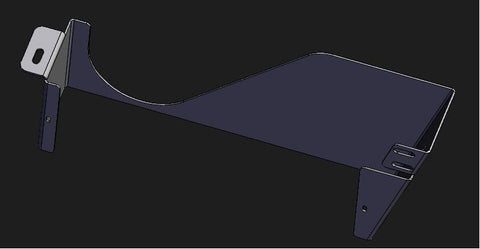Design Tips for Sheet Metal Bending
Share
Design Tips for Sheet Metal Bending
Using bending technology, here are 10 suggestions for creating the ideal design for sheet metal items.

Types of Sheet Metal Bending
The bending of sheet metal can be done in a number of ways. They are:
- The upper die, also referred to as the punch, and the lower die are used in air bending. The opening on the bottom die is V-shaped. The bottom die is pushed into the sheet metal by the punch. Air bending is less accurate than other techniques.
- Bottoming: Using this technique, the punch presses the sheet metal against the die's surface. The ultimate angle, which is the same as the die's, is subsequently assumed by the metal. The ideal width for the v-die opening is 6 times the thickness of the material for sheets about 3 mm thick, and it is around 12 times the thickness of the material for sheets about 12 mm thick.
- Air bending is comparable to coining. However, 5 to 30 times as much force as that required for air bending is typically applied. The precision is much increased as a result.
- Folding: The longer side of the metal is held in place by clamping beams. The sheet is free to be bent around a bend profile by the beam as it rises. Bend angles can be both negative and positive.
- Wiping: A tool is used to bend the metal around the bend profile while clamping the sheet's longer side. Although wiping is often faster than folding, it has a larger propensity to leave scratches on the sheet.
- Rotary bending: A cylinder that may freely rotate serves as the top die. It has a bottom die that matches the bend's ultimate shape already cut into it. The sheet rotates as the rolls make contact with it. It causes the sheet to flex.
- Joggle bending: This type of bending is offset. Less than 90 degrees are curved at each of the two opposite curves. The opposing bends are separated by a neutral web.
Design Tips for Bending
10 recommendations below are crucial when designing to guarantee a bend without a hitch and to prevent distortion.
- Part thickness

The wall thickness of the component must be constant throughout. Although Metal-Projects's partners can produce bent sheet metal parts up to a thickness of 6.35mm, this tolerance primarily depends on the shape.
2. Hole and slot clearance

At least 2.5 times the thickness of the material should separate the holes from the bend. Slots need more room to maneuver. The space between slots and the bend edges should be at least four times the thickness of the material. This is due to the likelihood that holes and slots placed close to bends would distort. Place these features at least twice as far from the edge of the part as the material thickness to prevent a bulging effect.
3. Bend radius
To avoid fracture or distortion, bends must have a minimum radius that is one and a half times the thickness of the material. To cut costs, the Bend radius should also be maintained consistently.
To avoid part reorientation, all bends in the same plane should be constructed in the same direction. This helps you save time and money.
Due of the great likelihood that they may become inaccurate, large, thick pieces shouldn't have minor bends. The interior bend radius should, as a general rule, be at least as large as the material thickness.
4. Curls

Curls must have an outside radius that is at least twice as thick as the material.
Additionally, the separation between holes and curls should be at least the sum of the material thickness plus the curl radius. At least 6 times the thickness of the material plus the radius of the curl should separate other bends from the curl.
5. Clearance for countersink
Countersinks are often made with hand tools for sheet metal items. They cannot be deeper than 0.6 times the thickness of the material. This means that a countersink's maximum depth in a piece of material that is 10 mm thick should be 6 mm.
In addition, countersinks must be at least 3 times the material thickness away from bends, 4 times away from edges, and 8 times apart from one another.
6. Hems
To provide a secure, rounded edge, hems are folds made at the edge of pieces. There are three hem styles with various design specifications.
Since bigger inside diameters will result in loss of circularity, the minimum inside diameter for open hems should be at least equal to the material thickness. The return length should be four times the thickness of the material to provide a proper bend.
Additionally, the inside diameter of teardrop hems must be at least as large as the material thickness. Following the radius, the run length should be at least four times the material thickness, with the opening being at least one-quarter the thickness of the material.
7. Sides with chamfers
To prevent distorted pieces, chamfers on flanges must allow enough area for bends.
8. Bends placed closely together
Unless absolutely required, avoid making consecutive curves. Fitting the already bent components on the die is a common issue for subsequent bends. The middle portion should, however, always be longer than the flanges when it cannot be helped.
9. Room for notch and tab clearance
The distance from the notch to the bend should be at least three times the thickness of the material plus the bend radius. Tabs, on the other hand, must be separated from one another by either 1 mm or the material thickness, whichever is greater.
10. Relief cuts

In order to prevent bulging and ripping at bends, relief cuts are crucial. The relief cuts' length should be greater than the bend's radius and their breadth ought to be at least equivalent to the thickness of the material.


